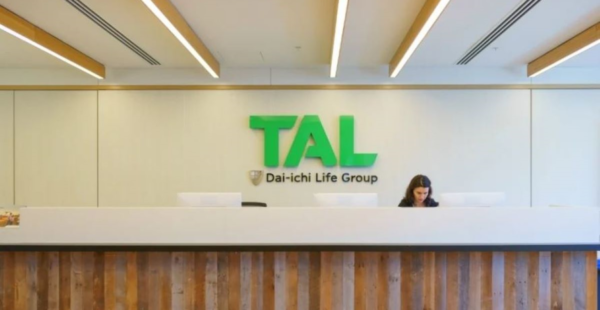A not so fairytale of two life insurers

Financial Newswire’s life/risk expert, Col Fullagar tells the tale of how Princess Partial bested the evil CEO, King Ka Ching on TPD noting that all similarities to people living or dead are entirely coincidental.
Once upon a time in a land not so far away there lived a life insurance company called Misery Life whose CEO went by the name of King Ka Ching.
Ka Ching’s goal was to increase the presence of Misery in the market and make life as dysfunctional as possible for those on claim. Nowhere was this goal better reflected than in the manifestation of Partial Disability claim assessments. This once beautiful benefit had been designed in part to encourage people on a total disability claim who had the ability to return to work to in fact do so. The encouragement was by way of ensuring the total amount they received from part-time earnings and benefit payments would always be greater than what was received if they had not returned to work.
Unfortunately, that which was otherwise good was turned, and as Ka Ching’s wicked web was woven and claimants were lured into returning to part-time work, they found themselves caught up in a vortex of pain.
First, they were told it was necessary to calculate a mystical beast called Pre-Disability Earnings. Benefit payments were suspended while they were told to provide the requisite data. For those returning as employees, this might only involve producing the odd tax return but the self-employed were not so lucky. Financial information sometimes for several years past could be required; not only for their main business but also for any entity in which they held a directorship even if those entities had no relevance to their claim. The cost of hiring trucks to deliver these documents could, of itself, be financially devastating.
Worse was to follow, however, as delivery was quickly followed by queries emanating from the Department of No Names evidently populated by beings called Technical Specialists. These queries possessed magical powers because as they were answered there was a puff of smoke, and they were immediately replaced by more queries of increasing number, complexity and perceived lunacy.
Eventually, the queries might stop and claim payments, albeit on a reduced basis, restart. Any relief felt by the claimant was, however, short-lived.
The once unobtrusive quarterly claim forms overnight morphed into monthly monsters that might include rare gems such as daily reporting of hours worked and duties undertaken, and even in some cases multiple questions related to functional capacity (whatever that is).
Financial proofs such as tax returns, NOAs and the like that previously had only been required at the end of the fiscal year were still needed but additionally those working as employees had to provide payslips every month. The self-employed others were, however, in for a special treat. Detailed profit and loss statements for a claim month as distinct from a calendar month, and for all relevant entities, were demanded. For these unfortunates, accounting fees could start to grow faster than Jack’s beanstalk as questions started all over again – what work does your spouse do in the business, do you get private benefit from any business expense items, and tell me more about this thing called depreciation …. on it went.
Yes, Ka Ching achieved great results by having those pesky claimants change many aspects of their life to fit into Misery Life’s claim process. Not surprisingly, in some cases this ended up with those who had returned to work being forced to stop work again to escape the pain, inconvenience and escalating costs associated with claiming a partial disability benefit. But there was no escape because they might then be interrogated about why they had stopped work when they had a demonstrated ability to do so. This in turn could lead to an accusation of not working to capacity and an associated reduction in benefit payments.
Misery by name and Misery by nature.
All was not doom and gloom, however, because in a parallel Universe far away there was another insurance company called Happy Life whose CEO was a wise and wonderful person named Princess Partial or PP as she was affectionately known.
PP knew that partial disability benefits were intrinsically good and, if used wisely could bring Happy Life and the claimant together. A way simply had to be found to truly encourage people to take up this facility.
First, PP realised that when working with people on claim, Communication and Respect were crucial. PP further realised that the machinations of partial disability benefits were a specialist area, so Partial Disability Consultants (“PDCs”) were appointed to handle the initial discussions with those considering a return to work on a part-time basis.
PDCs received additional training in matters such as the workings of partial disability benefits and business financials. PDCs needed to have sound negotiation skills but, most of all PP ensured that PDCs were entrusted with the authority to broker arrangements with claimants that worked for them as well as for Happy Life. In effect, PDCs were enabled to make a real and positive difference, and they were remunerated accordingly.
At a pragmatic level, the introduction of PDCs into the claim process would be facilitated by claim assessors who, in their ongoing contact with those on claim might identify when a return to part-time work was being considered.
The assessor would undertake a dual role of letting the claimant and/or their financial adviser know about how PDCs could assist and ask if they would like to engage with one. Subject to receiving the OK to proceed, the assessor would brief the PDC about relevant matters such as the claimant details, the claim condition, their work, employment status, and so on. The aim was to ensure the PDC was able to come to a meeting with the claimant on a well-informed basis such that discussions would avoid platitudes and generalisations and focus on productive and relevant specifics.
Once the necessary preparation had been undertaken, the assessor would arrange a day and time convenient for the claimant and PDC to meet. An agenda of matters to be discussed would be drawn up and circulated in advance. The agenda would include standard topics to be covered and specific things the claimant might want to raise. If necessary, the claimant might be asked to bring with them information that would assist to move things forward and they would also be encouraged to bring a support person if they wished with their financial adviser being a natural pick.
At the designated day and time, the PDC would introduce themself and things would get underway.
Typically, the meeting might begin with the PDC asking the claimant to advise in regard to:
- Work limitations arising out of their medical condition including how many days and hours they were hoping to return to work, and whether the return would be on a fixed or variable basis;
- Whether they were hoping to eventually return to work at their previous level or, if not realistically possible, what the return to work would look like; and
- What level of earnings were likely to ensue and again if these might be steady or variable.
There could also be a respectful discussion about what would happen if the return to work was unsuccessful and a return to total disability benefits was required; the importance of staying in touch with the treating doctor and letting the assessor know how it was going might be mentioned.
The PDC would explain the workings of the partial disability benefit including such things as the the10 hour definition if it was present in the policy.
The PDC might then address the questions that would been asked by the No Name Technical Specialists but by doing this one-on-one in a dynamic and respectful way, forward movement would more likely be achieved. By way of example, directorship entities could be discussed and agreement reached about which were relevant. Confirmation from the claimant’s accountant in regard to those not relevant might be requested.
Speaking of the accountant, if potential complexities existed in regard to the financials of the claimant’s business, the question might be asked about whether there could be advantage in a Happy accountant speaking direct with the claimant’s accountant, subject to all parties being agreeable to this.
Ultimately, whether it be in one or more than one meeting, the aim would be to achieve agreement in regard to:
- A basis for calculating pre-disability earnings;
- A basis for assessing post-disability earnings;
- The nature of ongoing claim proofs, financial and otherwise and frequency of same; and crucially
- A basis for calculating partial disability benefit entitlements.
The last item could well involve the PDC putting several alternatives to the claimant and asking which would work best for them. For example:
- Would they prefer monthly reconciliation of benefit payments requiring monthly reporting; or
- 3, 6 or even 12 monthly reconciliation of benefit payments which may require interim payments being made at an agreed level, with any under or overpayment of benefits at the end of the agreed period to be made up.
In regard to medical updates, a discussion could be had about minimising medical reporting by way of tapping into the claimant’s regular doctor attendances whilst at the same time ensuring claim reporting did not intrude on the claimant’s treatment needs and also ensuring the pressures on the medical fraternity were understood and respected.
When there was agreement that all relevant matters had been covered, outcomes would be documented and distributed to both the claimant and the assessor, with a handover meeting between the PDC and the assessor to round everything off.
Underpinning PP’s enlightened approach was a multi-faceted logic:
- Facilitating an optimal return to work requires Happy Life to do its best to be flexible to the claimant’s needs in stark contrast to Misery Life’s approach;
- Keeping the levels of inconvenience and cost as close as possible to what existed under the total disability regime – this might be called making the transition as seamless as possible;
- Not being overly concerned if benefit payments were sometimes slightly overpaid remembering that the reason for the 75% or otherwise maximum is to reduce the claimant’s incentive to stay away from work but once someone returns to work, the focus should change to how best to assist in keeping them working for as long and as many hours as possible
Whilst PP acknowledged that Happy Life was as much imaginary as Misery Life was reality, there was relief and a genuine hope that maybe one day a CEO by the name of Enlightened One would come forward to change things such that PP might happily reign ever after.
Col Fullagar is the principal of Integrity Resolutions Pty Ltd











It's entertaining watching people who didn't care at toss about equity when advisers copped it, but now they're facing the…
Besides AI has made these "Research Houses" obsolete. Go use Grok or Gemini.
Only took six months
No way would I pay for the rubbish that comes out of so called rating and research houses. Paying someone…
And people wonder why advisers are leaving the industry (or just getting out of providing any form of personal advice…